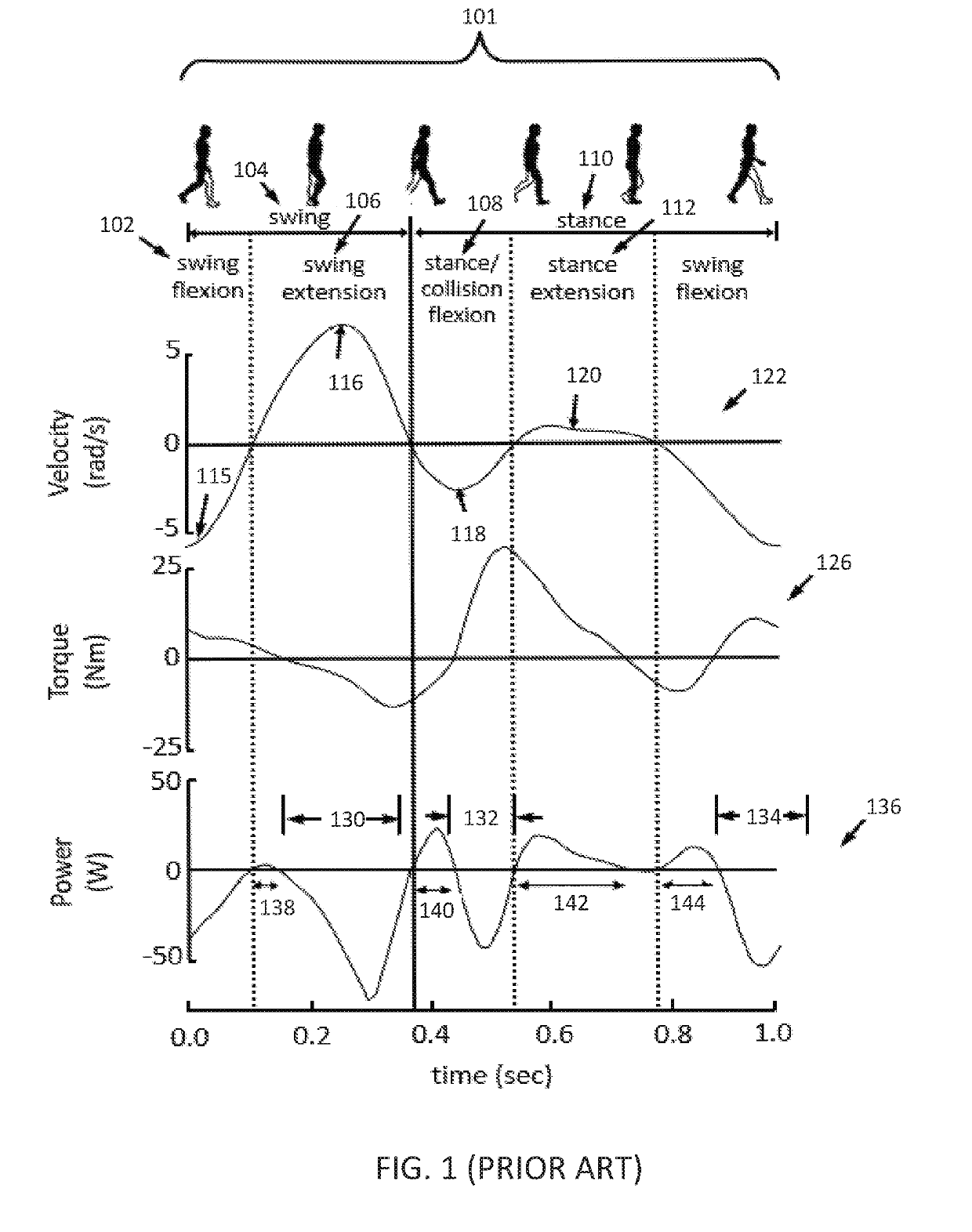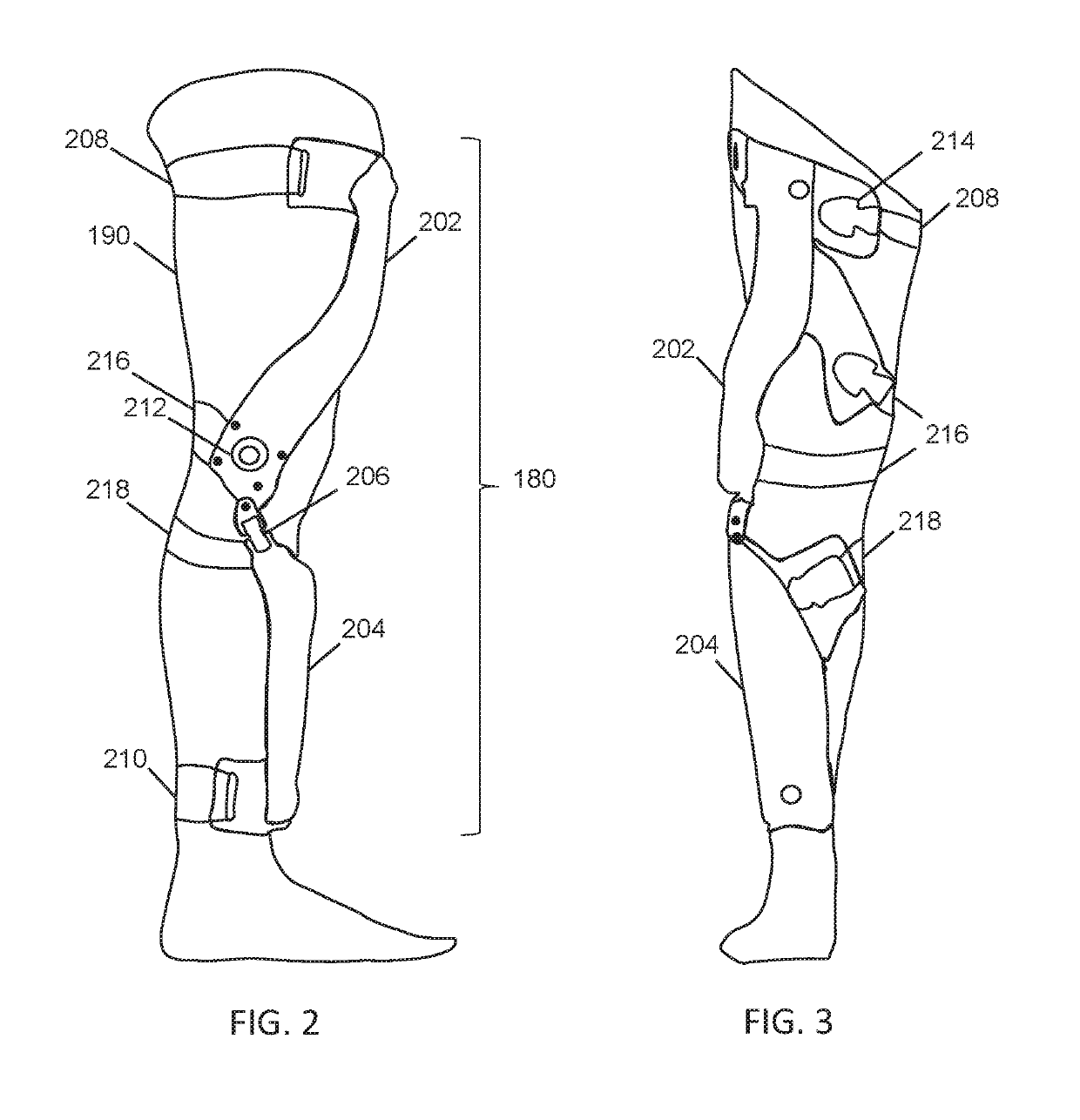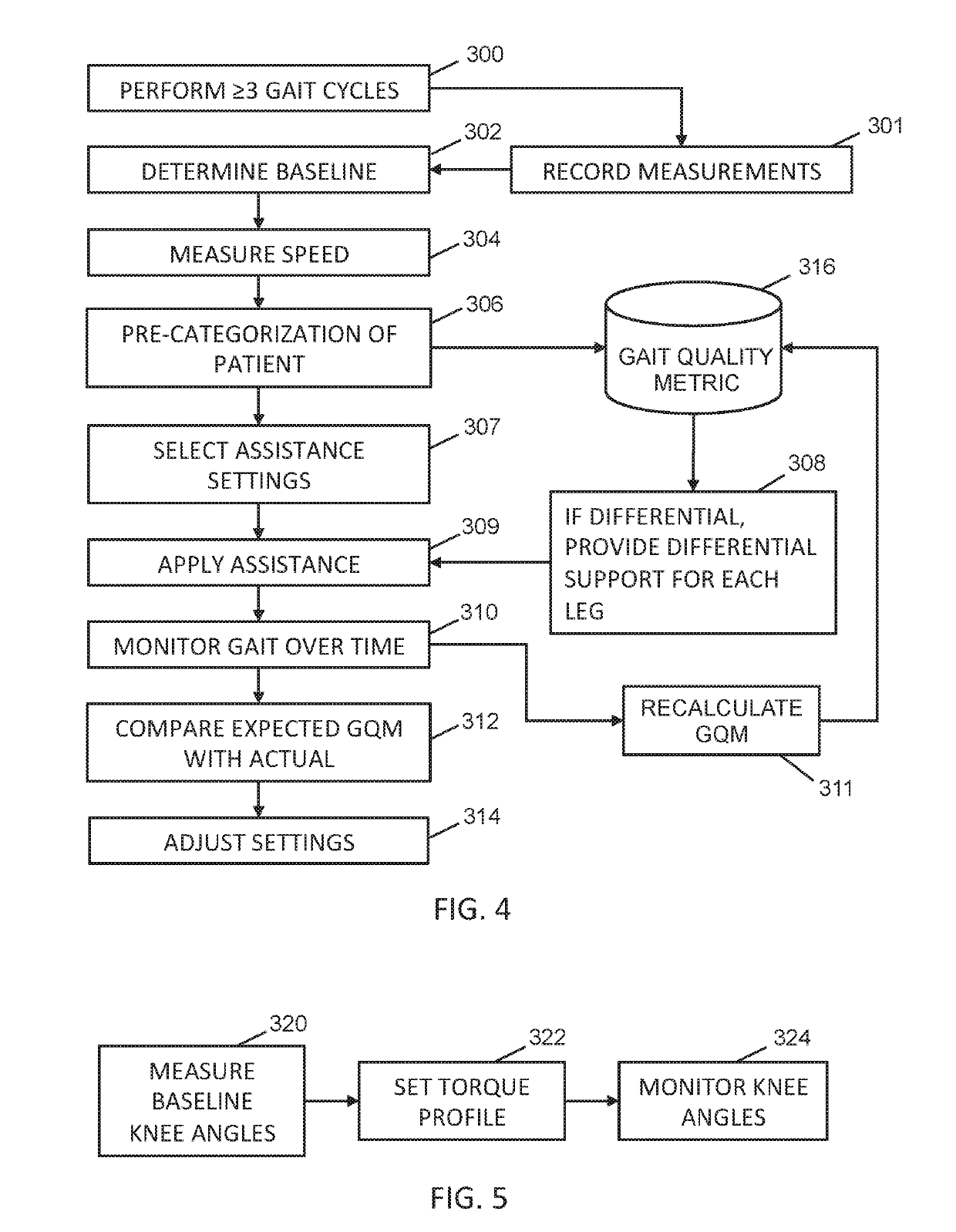Exoskeletal gait rehabilitation device
a rehabilitation device and spondylosis technology, applied in the field of exoskeletons used to assist walking motion, can solve the problems of high difficulty in understanding and assessing human gait, size and weight of peds used for military applications, spinal cord injury, etc., to reduce metabolic cost, increase patient fatigue, and strengthen muscles
- Summary
- Abstract
- Description
- Claims
- Application Information
AI Technical Summary
Benefits of technology
Problems solved by technology
Method used
Image
Examples
Embodiment Construction
A. Glossary
[0032]The term “assistance” is used herein to refer to helping a patient walk, either in the negative power mode, the positive power mode or both.
[0033]The term “augmentation” is used to refer to the assistance to a patient involving adding torque in the same direction as the body segment is accelerating.
[0034]The term “body segment” may refer to a part of a body, such as a thigh, for example. It may also refer to one or more muscles of the body segment, such as a hamstring and a quadriceps. Further, a body segment may also comprise multiple, constituent body segments, depending on how they are defined. Most muscle groups span across two joints. For instance, the hamstring (i.e. the biceps femoris and semitendinosus) spans from pelvis to tibia, and the quadriceps (including, e.g., the vastus intermedius) spans from upper femur to tibia via the patella and tendons. As a consequence, contraction of a muscle may affect multiple skeletal body segments.
[0035]The term “harvesti...
PUM
 Login to View More
Login to View More Abstract
Description
Claims
Application Information
 Login to View More
Login to View More - R&D
- Intellectual Property
- Life Sciences
- Materials
- Tech Scout
- Unparalleled Data Quality
- Higher Quality Content
- 60% Fewer Hallucinations
Browse by: Latest US Patents, China's latest patents, Technical Efficacy Thesaurus, Application Domain, Technology Topic, Popular Technical Reports.
© 2025 PatSnap. All rights reserved.Legal|Privacy policy|Modern Slavery Act Transparency Statement|Sitemap|About US| Contact US: help@patsnap.com



